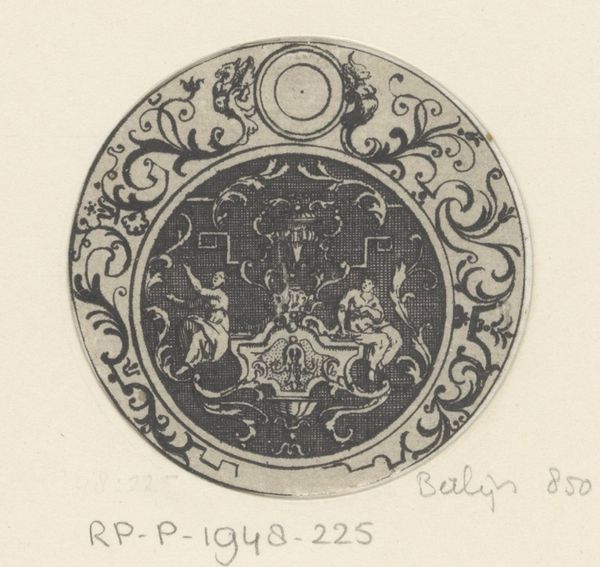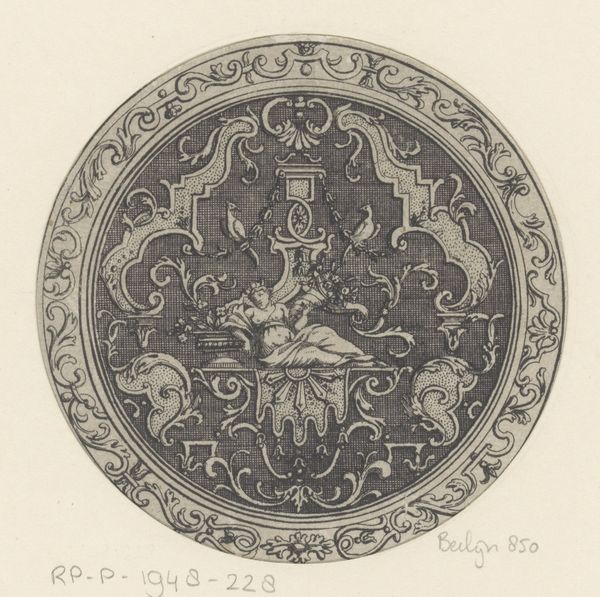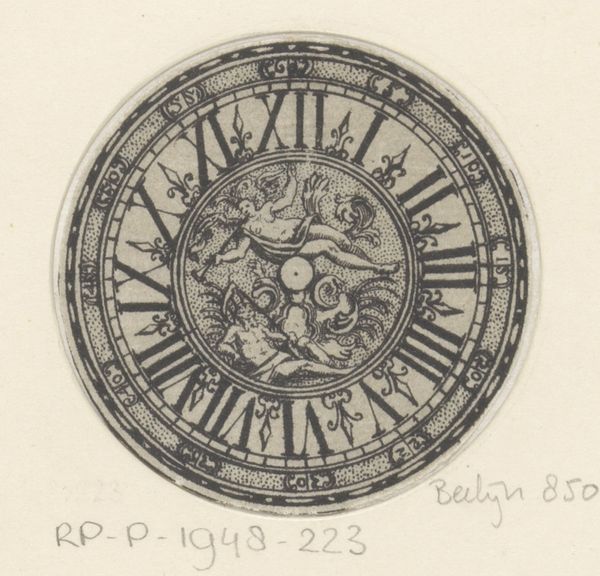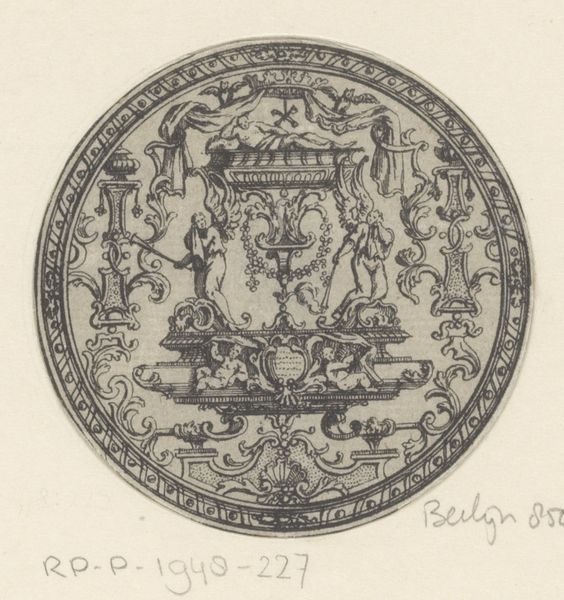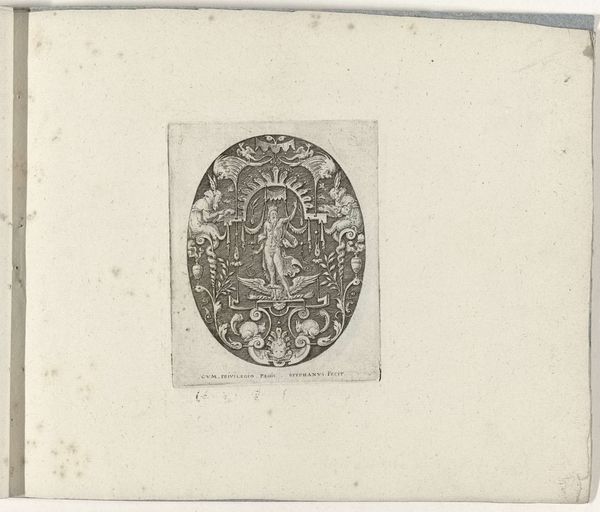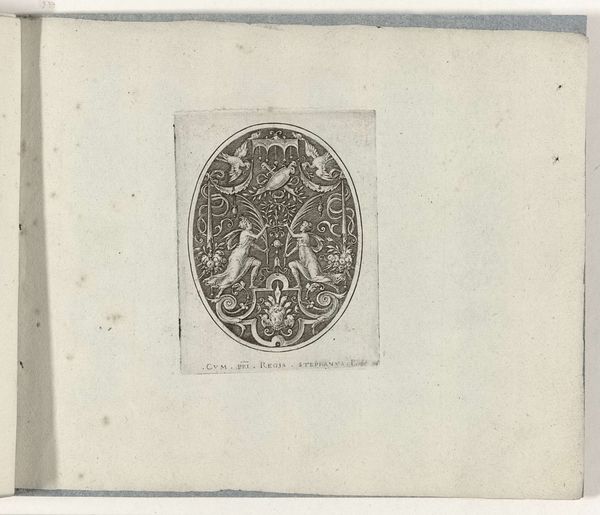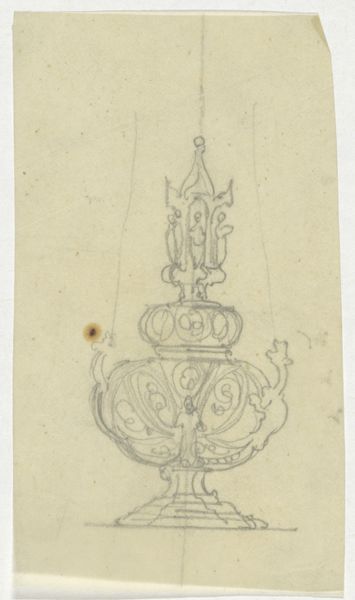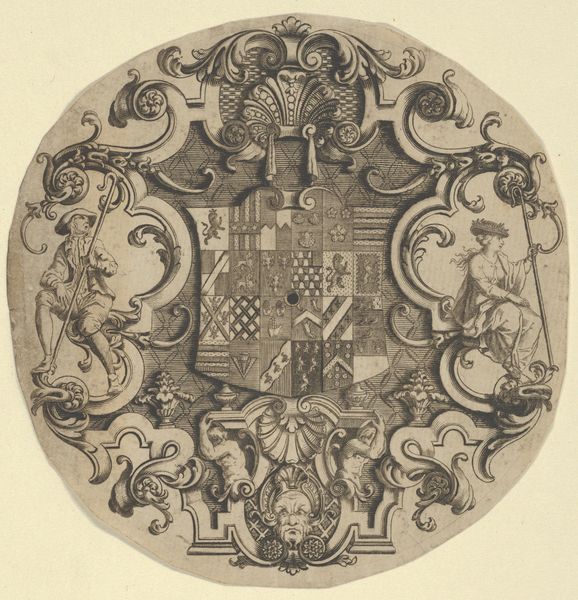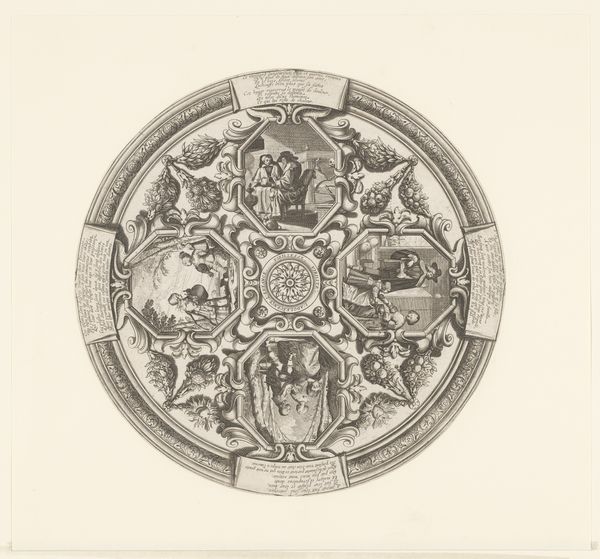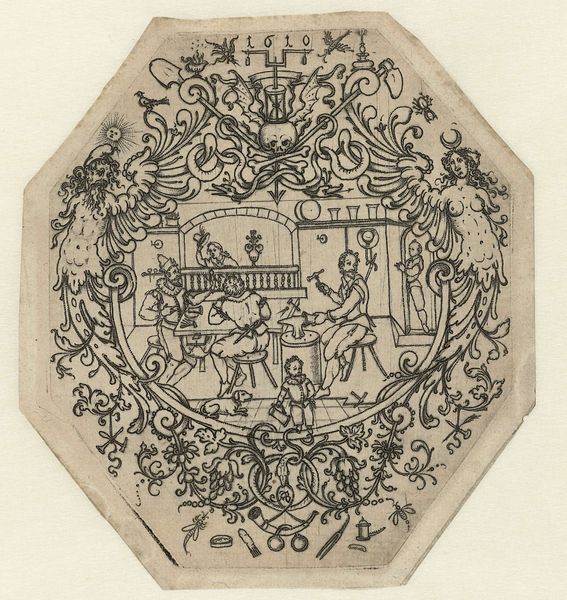
drawing, ink, engraving
#
drawing
#
baroque
#
pen drawing
#
ink
#
geometric
#
pen-ink sketch
#
decorative-art
#
engraving
Dimensions: height 46 mm, width 46 mm
Copyright: Rijks Museum: Open Domain
Editor: So, here we have an anonymous artwork from after 1703, "Cirkelvulling met cartouche en vlechtwerk," created using pen, ink, and engraving. It feels intensely ornamental, like a decorative plate design. What strikes you most about this piece? Curator: Well, the method of production is most interesting. It’s not merely decorative, but gives us insights into the late Baroque period, where craft and "high" art blur. Notice the intense detail achieved through the pen, ink, and engraving processes. Consider the labor involved, the skill, and the intention. The printmaking process allowed for multiples; how does that impact its social context? Editor: The reproducibility is a fascinating point. Did these kinds of designs often get transferred onto other objects or used as models? Curator: Precisely! The engraving suggests a potential for mass production, maybe for ceramics or metalwork. We must also think of access: Who would consume such ornamented objects and what does that say about social status and emerging class structures? How did the making of ornament, like this, function within workshops? Editor: So it’s not just about the pretty design, but about understanding who made it, how it was made, and who had access to it? Curator: Exactly. The materiality of the ink, the paper, the tools… each holds a piece of the puzzle, and by exploring the means of production, labor, and consumption we move past aesthetic appreciation into social understanding. Consider that vlechtwerk—or wickerwork. The production and consumption of crafted object is embedded here! Editor: That makes me look at it in a totally different light. I’m seeing it less as a pretty design and more as evidence of a complex social and economic web. Curator: That’s the power of looking at art through a materialist lens. It forces us to consider the broader context, the labor, and the system within which this seemingly simple "Cirkelvulling" was created and circulated. Editor: It's like the object becomes a portal to a whole world. Thanks, I’ll definitely carry this perspective with me.
Comments
No comments
Be the first to comment and join the conversation on the ultimate creative platform.
